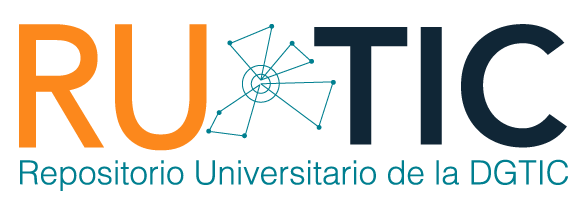| dc.coverage.spatial | MX | |
| dc.date.accessioned | 2018-06-28T05:25:12Z | |
| dc.date.available | 2018-06-28T05:25:12Z | |
| dc.date.issued | 2015-09-01 | |
| dc.identifier.uri | https://ru.tic.unam.mx/handle/123456789/2352 | |
| dc.description | Tema del mes | |
| dc.description.abstract | La producción de metales nanoestructurados por deformación plástica severa (SPD, por sus siglas en inglés) ha ganado mucho interés en años recientes dada su capacidad para producir microestructuras refinadas utilizando una metodología top-down, que resulta en materiales libres de porosidad e impurezas. El aluminio es una buena aplicación para SPD dada su facilidad de procesar una amplia gama de aleaciones con estas técnicas. En este estudio, aleaciones de Al con diferentes contenidos de Fe fueron procesadas por torsión a alta presión (en adelante HPT, por sus siglas en inglés), la técnica más popular de SPD. El tamaño de grano en la matriz de Al se redujo a ~130 nm y las fases secundarias fueron parcialmente disueltas y fragmentadas en partículas de tamaño muy por debajo de 1 μm. La alta resistencia obtenida resulta del efecto tanto de la matriz de grano ultrafino así como de las partículas uniformemente dispersas. Un endurecimiento adicional se obtuvo mediante envejecimiento artificial a 200 °C, debido a la precipitación de nanopartículas semicoherentes de Al6Fe y Al3Fe en la condición de envejecimiento óptimo. | es_MX |
| dc.description.abstract | The production of bulk nanostructured metals by severe plastic deformation (SPD) has gained much interest in recent years because of the capability to produce very fine microstructures using a top-down approach, which results in materials that are free from porosity and impurities. Aluminum is a good application of SPD because it is easy to process a wide range of alloys. In this study, Al alloys containing different contents of Fe were processed by High-Pressure Torsion (HPT), which is the most popular technique of SPD. The grain size of the Al matrix was refined down to ~130 nm and the secondary phases were partially dissolved and fragmented into particles with a size well below 1 μm. Hence, the Al-2 wt%Fe alloy is significantly strengthened from the as-cast condition with reasonable ductility, which results in superior mechanical properties when compared to high strength commercial Al alloys. The high strength results from the effect of the ultrafine-grained Al matrix as well as finely dispersed particles. Additional strengthening was achieved when artificial aging was carried out at 200 °C due to precipitation nano-sized coherent and semi-coherent Al6Fe and Al3Fe particles in the peak-aged condition. | en |
| dc.format | html | |
| dc.format | application/pdf | |
| dc.format.extent | 3.9 MB | |
| dc.format.extent | 1.76 MB | |
| dc.language | spa | |
| dc.publisher | Universidad Nacional Autónoma de México. Dirección General de Cómputo y de Tecnologías de Información y Comunicación. Revista Digital Universitaria | |
| dc.relation.isformatof | http://www.revista.unam.mx/vol.16/num9/art73/art73.pdf | |
| dc.relation.ispartof | http://www.revista.unam.mx/index_sep15.html | |
| dc.rights | openAccess | |
| dc.source | Revista Digital Universitaria (1607 - 6079). Vol. 16, No. 9 (2015) | |
| dc.subject | Materiales nanoestructurados | |
| dc.title | Desarrollo de aleaciones nanoestructuradas de aluminio con propiedades mecánicas superiores mediante deformación plástica severa | es_MX |
| dc.title.alternative | Development of nanostructured aluminum alloys by severe plastic deformation with well-enhanced mechanical properties | en |
| dc.type | article | en |
| dc.subject.keywords | Nanoestructura, Aleaciones de aluminio, Refinamiento de grano, Torsión a alta presión, Alta resistencia, Endurecimiento por precipitación, Nanostructure, aluminum alloys, Grain refinement, High-pressure torsion, High strength, Age-hardening | |
| dc.identifier.url | http://www.revista.unam.mx/vol.16/num9/art73/ | |
| dc.creator | Jorge M. Cubero-Sesin | |
| dc.rights.url | http://creativecommons.org/licenses/by-nc-sa/4.0 |
Files in this item
This item appears in the following Collection(s)
COMPARTE
BÚSQUEDA
Escriba el texto a buscar en DSpace
CONTACTO
El Repositorio Universitario de la DGTIC se edita en la Dirección General de Cómputo y
de Tecnologías de Información y Comunicación (DGTIC), de la Universidad Nacional Autónoma de México (UNAM)
Circuito Exterior s/n, Ciudad Universitaria, Coyoacán, C.P. 04510, México, D.F
Tel: +(52) (55) 56228166 Email: rutic@unam.mx









 ¿Qué es un repositorio...?
¿Qué es un repositorio...? ¿Qué beneficios obtengo...?
¿Qué beneficios obtengo...? ¿Qué tipo de recursos...?
¿Qué tipo de recursos...? Preguntas frecuentes
Preguntas frecuentes